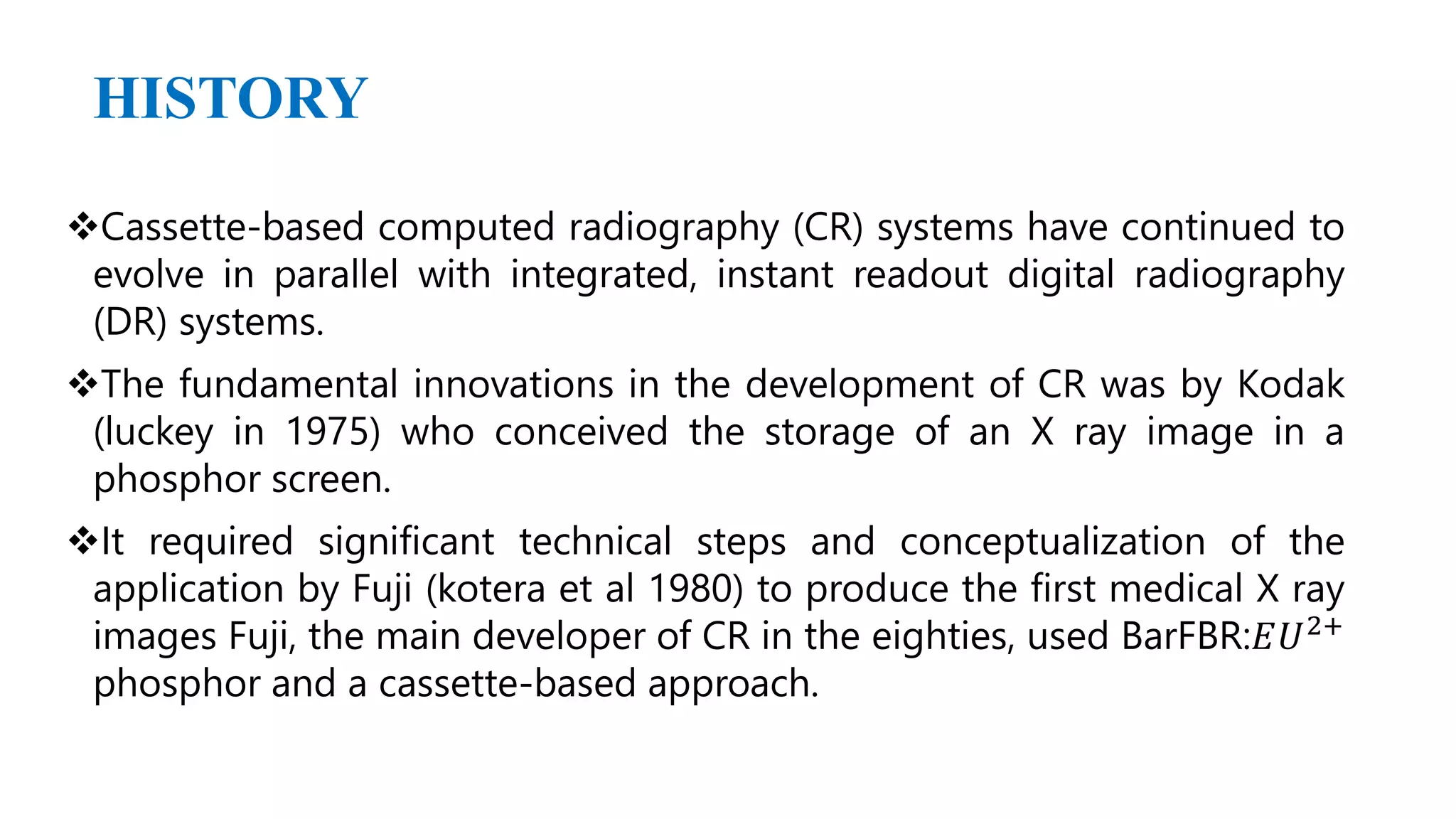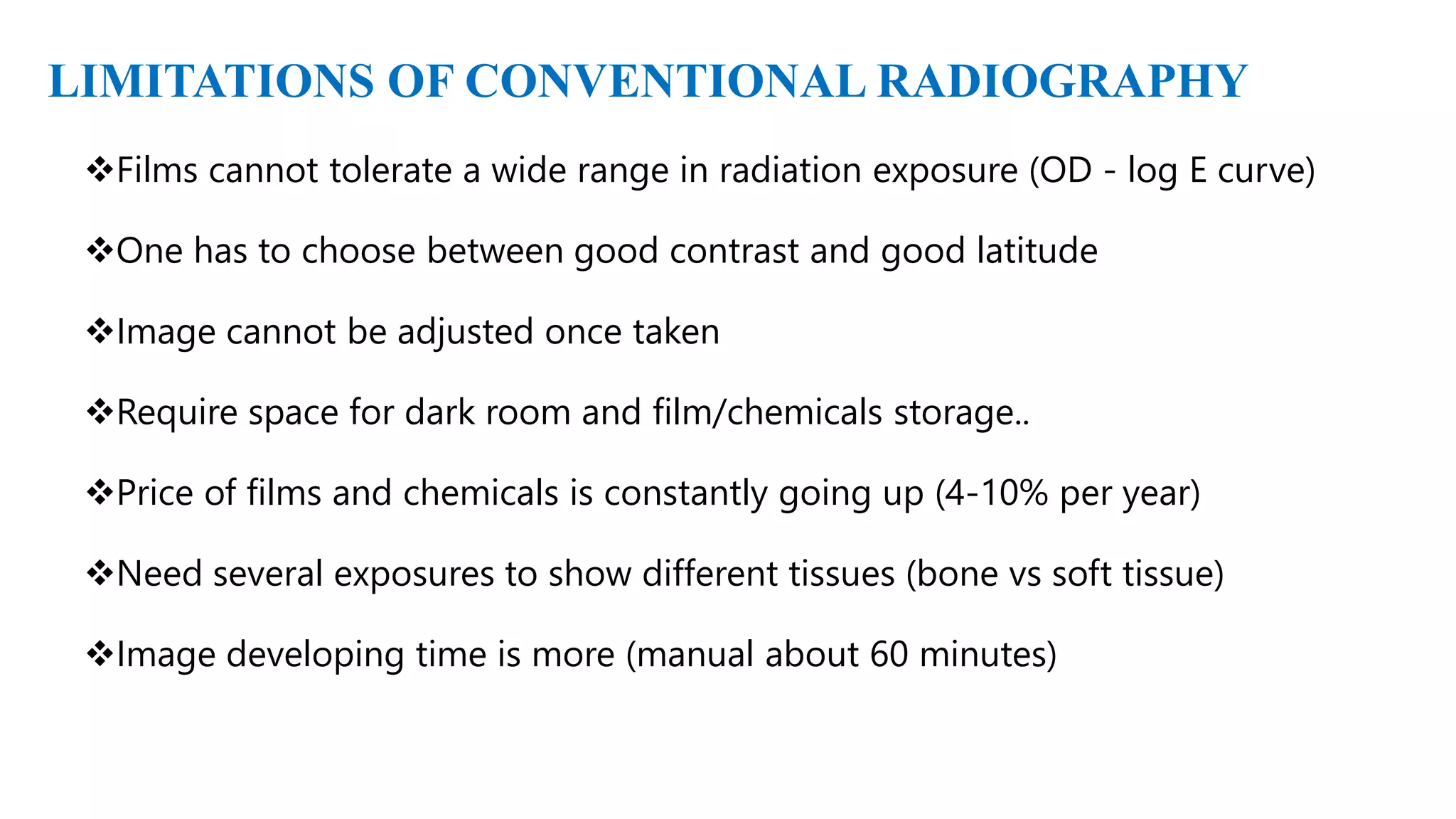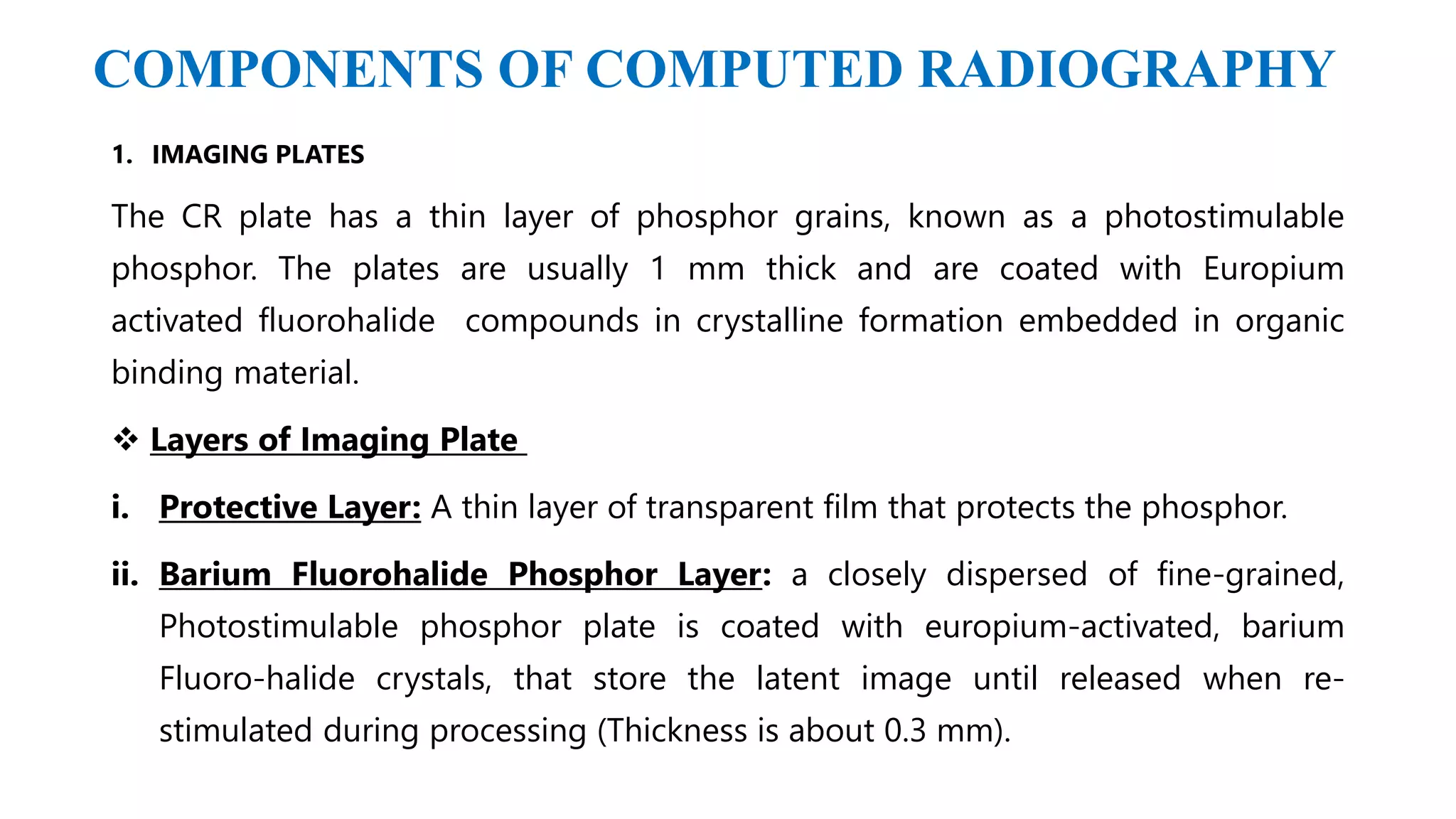Computed radiography (CR) uses reusable imaging plates and associated hardware and software to acquire and display digital x-ray images as an alternative to traditional film-based radiography. The document provides an overview of the key components of a CR system, including the imaging plate, reader/digitizer, and workstation. It describes how a latent image is captured and stored in the phosphor plate from x-ray exposure, then stimulated and converted to a digital image by the reader using a laser. The advantages of CR over conventional radiography are also summarized, such as reusability of plates and improved image manipulation, storage and sharing capabilities.





















